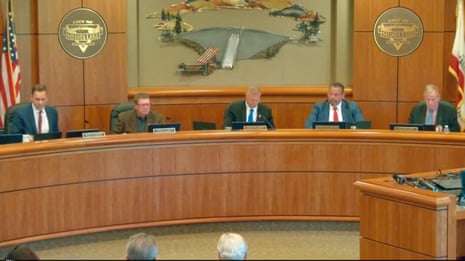Executive Summary
- Trump's budget proposes a 13% increase in defense spending, exceeding $1 trillion, while cutting $163 billion from non-defense discretionary programs.
- The budget aims to significantly reduce funding for programs related to climate change, housing assistance, education, and foreign aid, sparking strong opposition from Democrats.
- Several Republican senators have also voiced concerns, particularly regarding the freeze in defense funding after accounting for inflation, and cuts to programs like LIHEAP.
Event Overview
President Trump's budget proposal for the 2026 fiscal year outlines a significant shift in federal spending priorities. The plan emphasizes bolstering defense and homeland security, allocating over $1 trillion to the Pentagon while simultaneously proposing substantial cuts to a wide range of domestic and international programs. This includes slashing funding for education, environmental protection, housing assistance, and foreign aid, triggering widespread criticism and setting the stage for a contentious budget debate in Congress. The proposal reflects Trump's focus on military strength and border security, but its potential impact on social welfare and economic development is raising serious concerns.
Media Coverage Comparison
| Source | Key Angle / Focus | Unique Details Mentioned | Tone |
|---|---|---|---|
| The Guardian | Overview of key Trump administration activities and policies, focusing on military spending, social program cuts, and reactions to Trump's actions. | Mentions a military parade planned for Trump's birthday and the army's 250th anniversary. Includes Trump's legally questionable move to take away Harvard's tax-exempt status. | Neutral, informative, with a slight critical undertone regarding Trump's policies. |
| CNN Politics | Detailed breakdown of the proposed budget, highlighting specific cuts to various programs and agencies, and reactions from both Republican and Democratic senators. | Provides specific dollar amounts for cuts to programs like LIHEAP, National Park Service, climate research, and housing assistance. Mentions the elimination of diversity, equity, and inclusion initiatives. | Objective, factual, focusing on the specifics of the budget proposal and political responses. |
Key Details & Data Points
- What: President Trump's budget proposal for fiscal year 2026 includes increased defense spending, substantial cuts to non-defense discretionary programs, and changes to various federal agencies and initiatives.
- Who: Key individuals involved include President Trump, White House officials, Republican and Democratic senators (Susan Collins, Roger Wicker, Patty Murray), and agency heads.
- When: The budget proposal was unveiled on Friday, May 2, 2025 (inferred from article date; other events spread around the same timeframe), outlining recommendations for fiscal year 2026 spending.
- Where: The events are centered in Washington D.C., involving the White House, Congress, and various federal agencies.
Key Statistics:
- Key statistic 1: 13% increase in defense spending (to over $1 trillion) (reflects Trump's emphasis on military strength)
- Key statistic 2: $163 billion in cuts to non-defense discretionary spending (nearly a 23% reduction) (shows shift in budget priorities)
- Key statistic 3: $12 billion cut from the Department of Education (15% of its budget) (highlights reduction in education funding)
Analysis & Context
Trump's budget proposal represents a significant departure from previous spending patterns, prioritizing defense and border security while drastically reducing funding for social programs, environmental initiatives, and international aid. The proposed cuts are likely to face strong opposition from Democrats and moderate Republicans in Congress, making the budget's passage uncertain. The plan reflects a broader ideological shift towards smaller government and reduced federal intervention in areas such as healthcare, education, and environmental protection. The cuts, if enacted, could have significant consequences for vulnerable populations, scientific research, and international cooperation.
Notable Quotes
"This budget proposal would set our country back decades by decimating investments to help families afford the basics, to keep communities safe, and to ensure America remains the world leader in innovation and lifesaving research."
"President Trump successfully campaigned on a Peace Through Strength agenda, but his advisers at the Office of Management and Budget were apparently not listening."
Conclusion
President Trump's proposed budget for 2026 has ignited a political firestorm, highlighting deep divisions over federal spending priorities. The plan's emphasis on defense and cuts to social programs have drawn sharp criticism from both sides of the aisle. While the budget reflects Trump's vision for a stronger military and reduced government intervention, its potential impact on social welfare, scientific research, and international relations remains a major point of contention. The budget's fate hinges on the upcoming negotiations in Congress, where its provisions are likely to be heavily debated and revised.
Disclaimer: This article was generated by an AI system that synthesizes information from multiple news sources. While efforts are made to ensure accuracy and objectivity, reporting nuances, potential biases, or errors from original sources may be reflected. The information presented here is for informational purposes and should be verified with primary sources, especially for critical decisions.









